Magical Kaas Plateau
- With JungleHike Tours (Avinash Bhagat)
- 28 & 29 Sep, 2019
I have been hearing about the Kaas plateau in Satara for last few years but could never go there. It has become famous for the wild-flowers that grow on the plateau. I was told, that this can only be seen for a very limited period during the year (only for few weeks, towards the end of monsoon).
Finally got a chance to visit the place this September. Avinash announced the tour couple of months back and I quickly jumped on to that. My knowledge of flowers, plants (botany in general) is infinitesimally close to ZERO but what’s the harm in learning something new! Initially both me and Deepa planned to go but a week before the trip she dropped out.
Typically, by September end the rains in Maharashtra are almost done but this year it was different. Monsoon was still going strong and 2 days before our trip, there were even landslides reported on the ghat section between Pune and Satara (we had to take that route). Suddenly there were doubts whether we would even start from Thane. Checked with Avinash/Clara about it, but they were very confident. Avinash said, in the worst-case scenario, we can take an alternate route to the destination but we are going! Once this marching order was confirmed by the captain, we had nothing more to think.
Initially it was supposed to be 10 participant tour but due to last minute cancellations, 8 of us gathered by 10:30pm on 27th September. Our journey started soon in a Tempo Traveller. Was little worried about the possible rain situation on the way, but pretty soon I dozed off in the seat. In-between, kept checking outside the window but there was no rain.
By about 6:15am, we reached our hotel (it was near Patan town on the way to Chiplun). We got to our rooms and quick unpacking/freshening-up was done with. By 7:30, we were ready for breakfast and then on our way to the plateau. But before that, the moment I went to the room, we could hear some birds outside and immediately the birding lens was put to use.
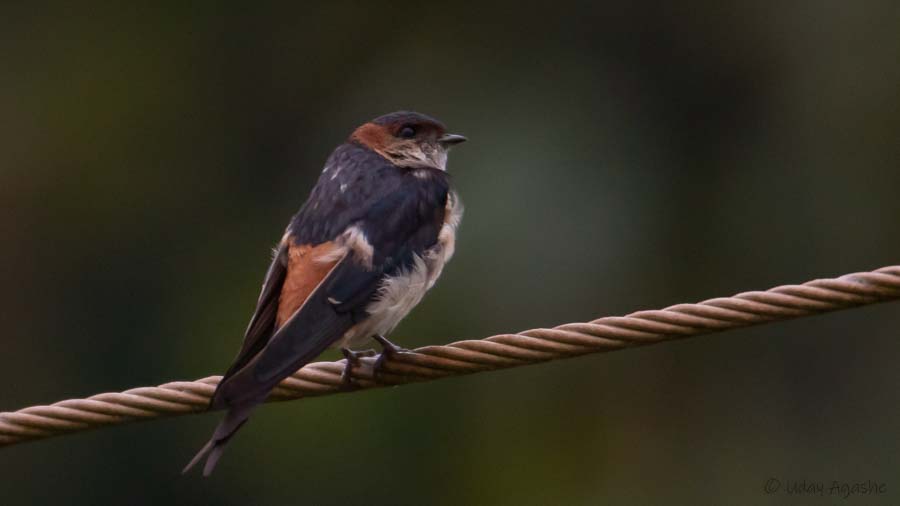
Red-rumped Swallow
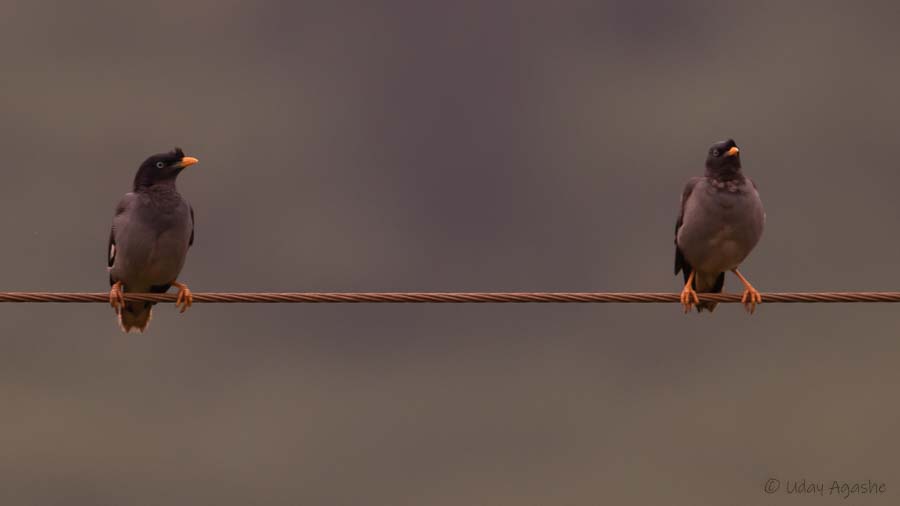
Jungle Myna
Our first destination was a place known as Sadawaghapur (सडा वाघापूर) that was about an hour’s journey from the hotel. This was relatively unknow plateau (not famous like Kaas) and because of which, there were only the 8 of us there.
On reaching the spot, we quickly got down with our camera equipment and before we realized anything Avinash had already started spotting the wild-flowers. For me every flower was new, so had to photograph all of them. Within a small patch of few square meters, there was so much variety on offer.
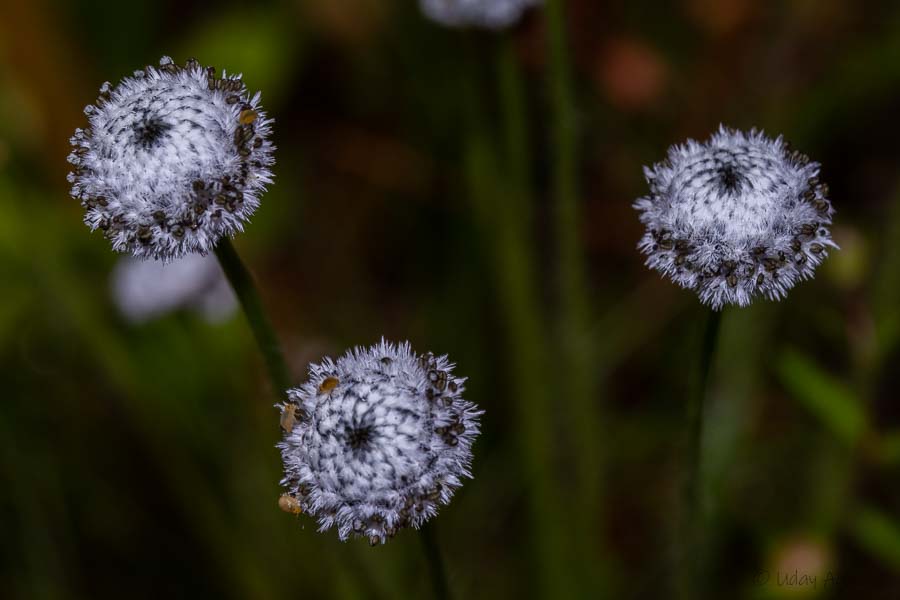
Eriocaulon sedgwickii
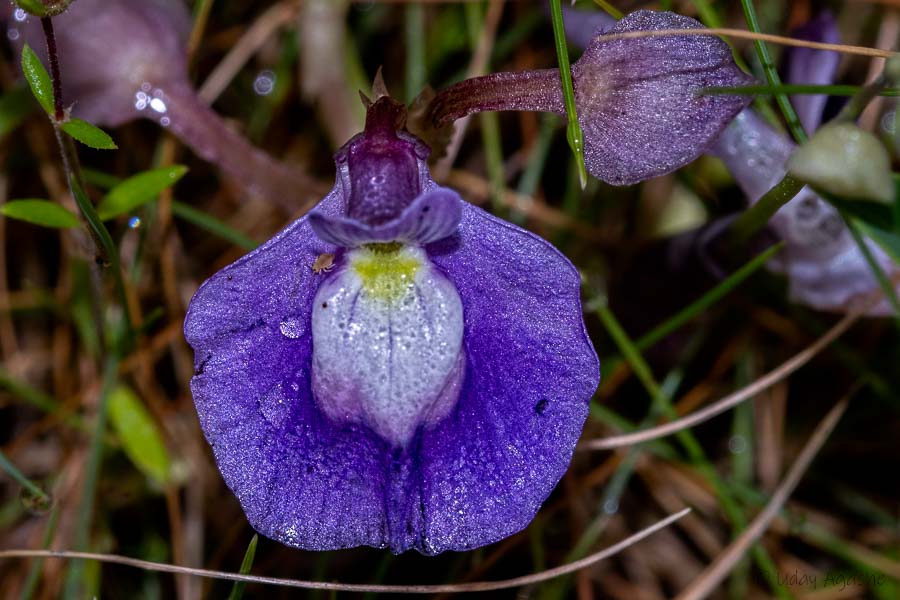
Utricularia purpurascens

Murdannia semiteres

Cyanotis fasciculata

Murdannia versicolor
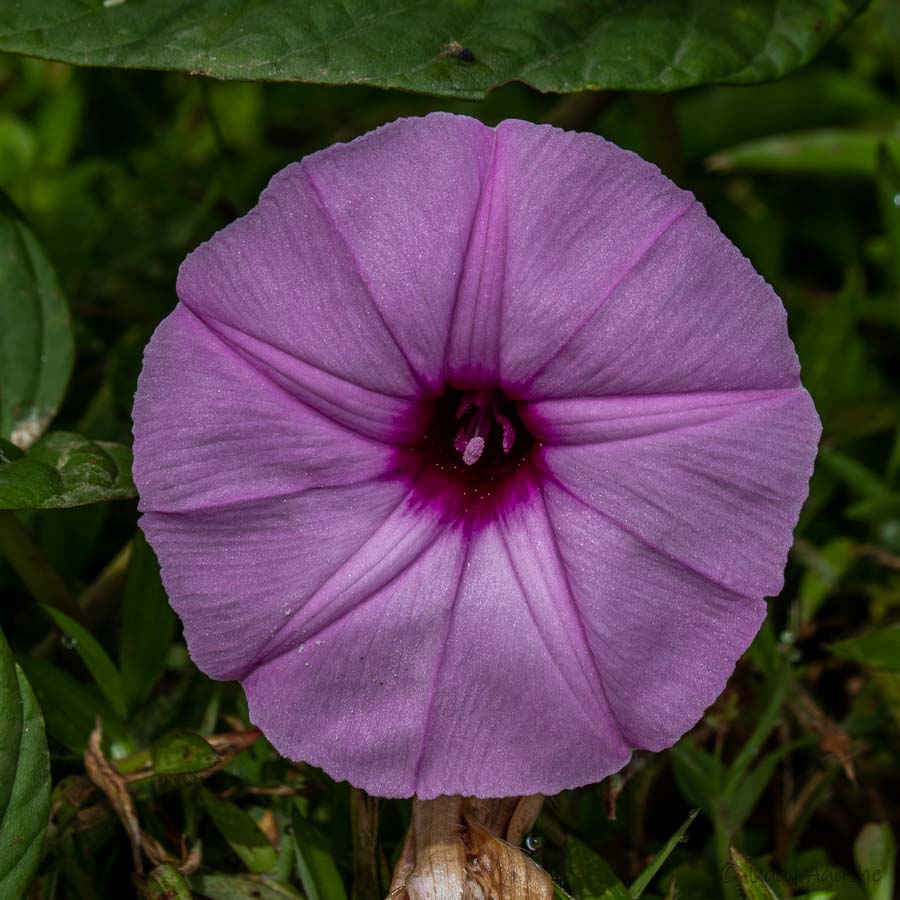
Argyreira sericea

Exacum pumilum
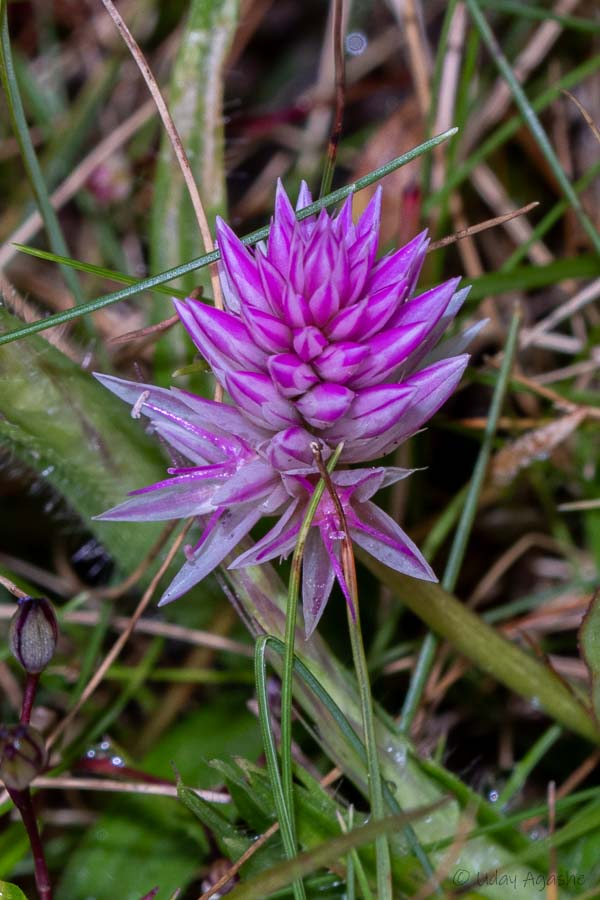
Celosia argentia
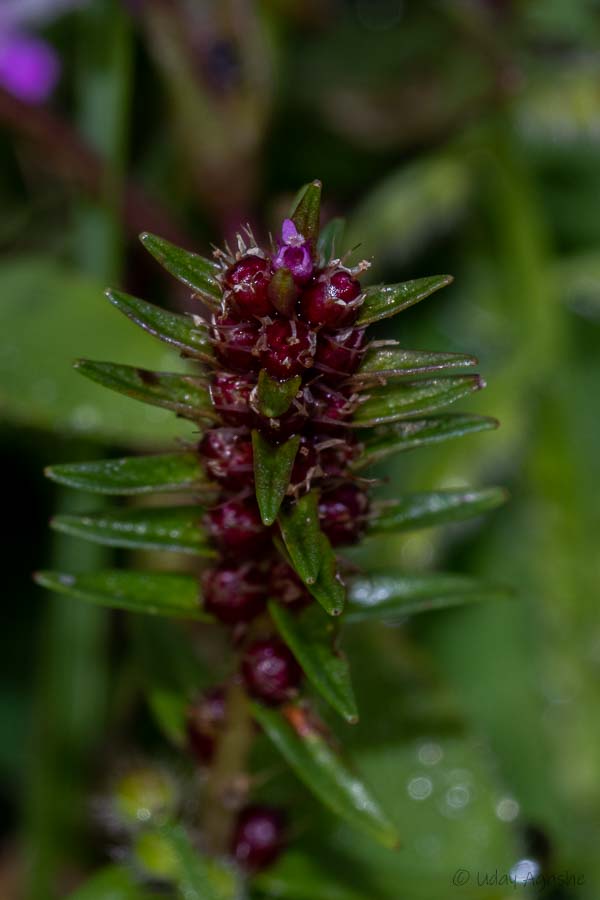
Rotala
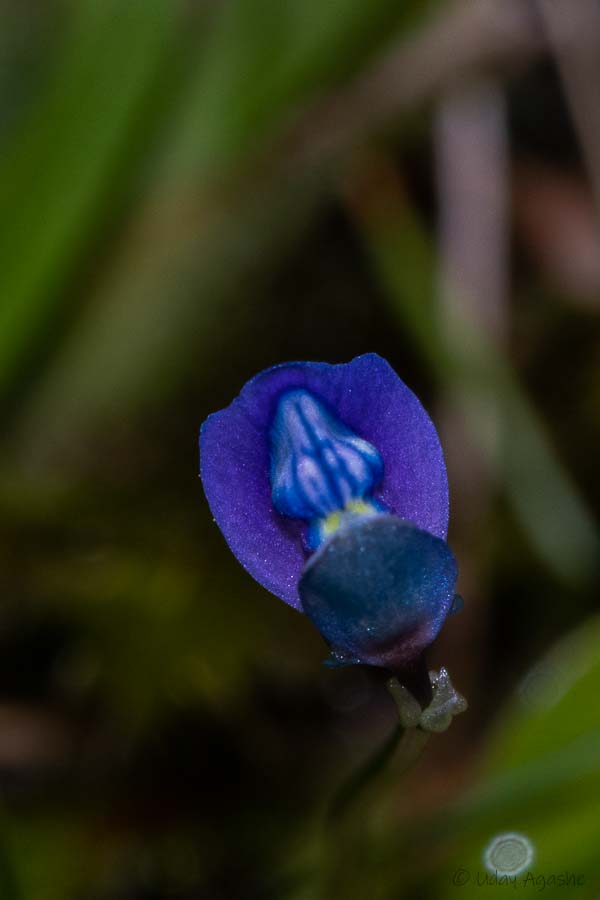
Utricularia purpurens
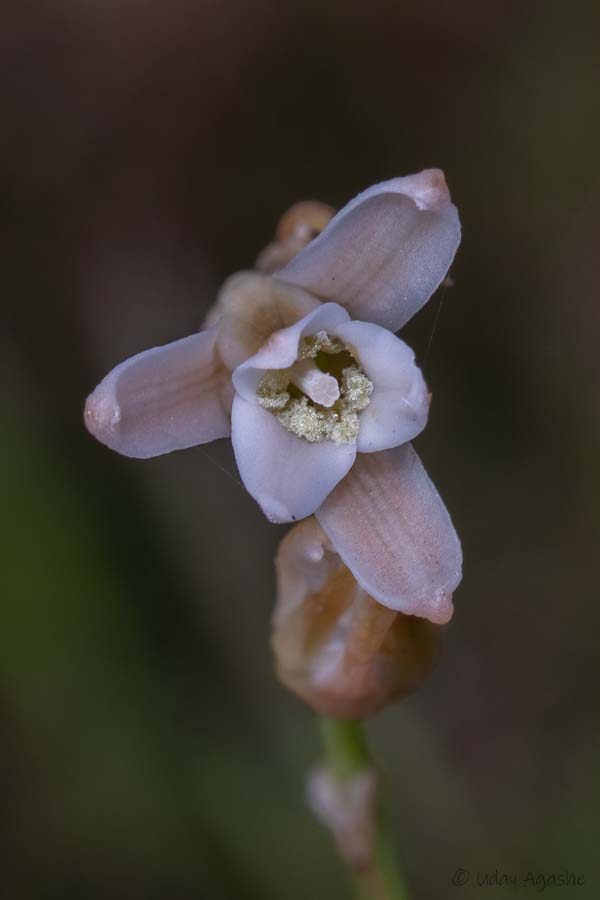
Dipcadi montanum
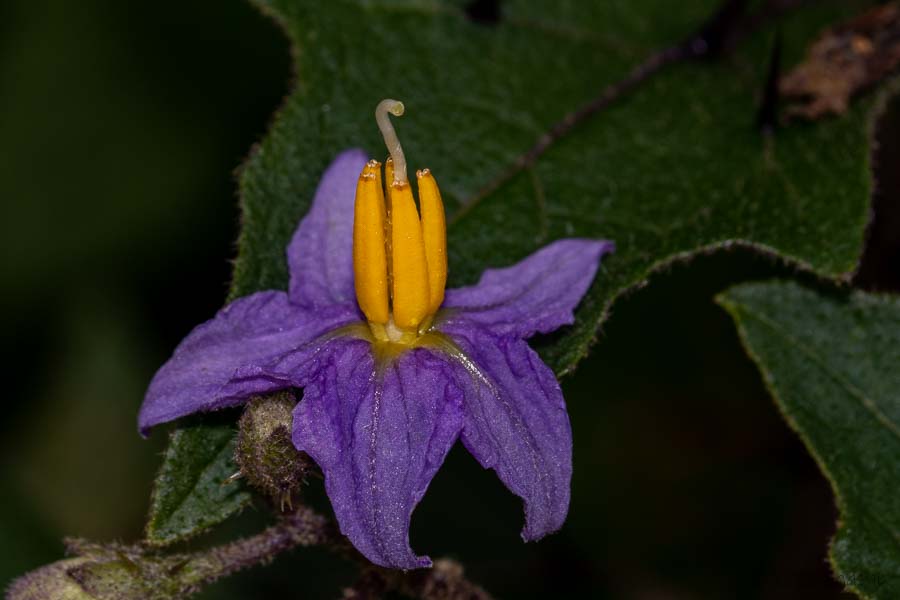
Solanum anguivi
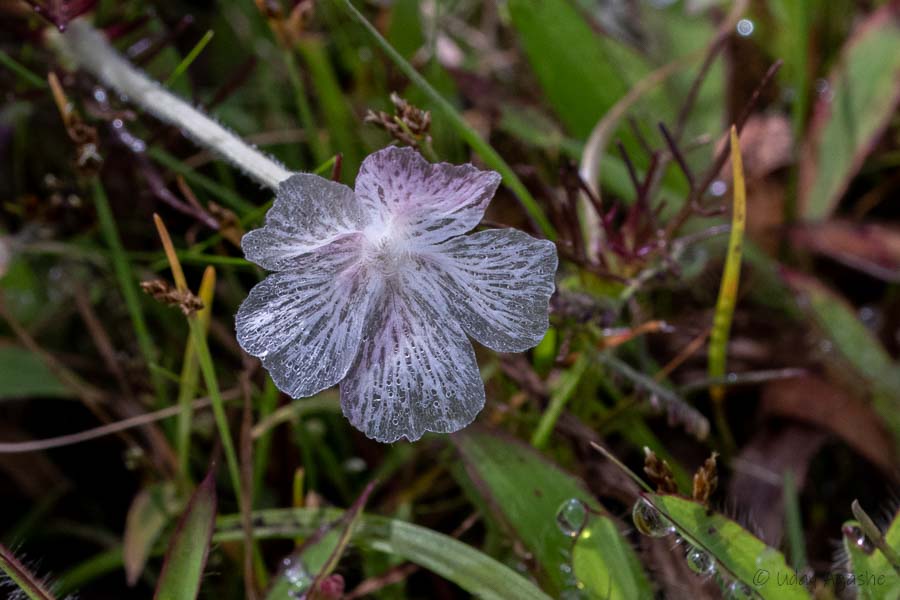
Rhamphicarpa fistulosa(तुतारी)
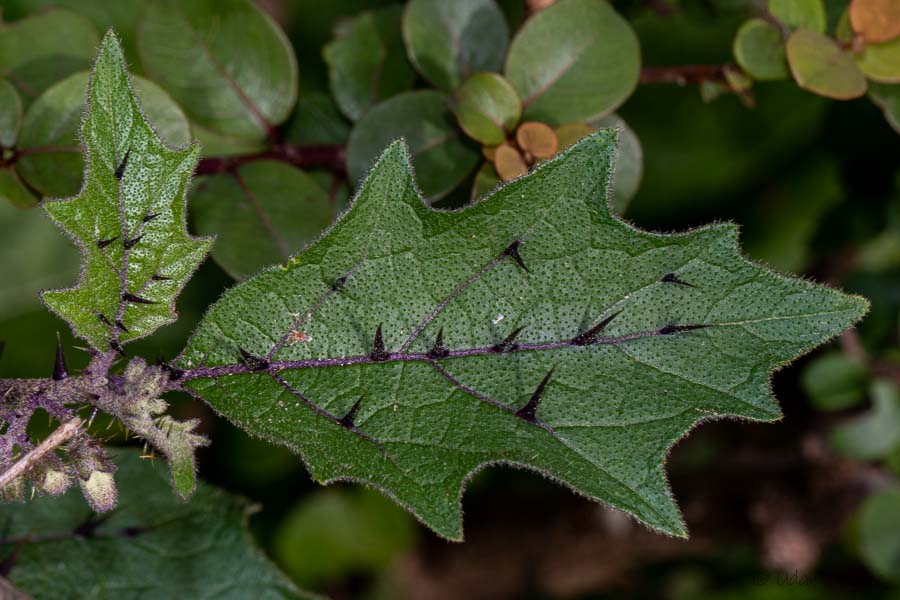
Leaf with thorns
If you look at the last photo above, it is a leaf and not flower. The specialty here is, the leaf has thorns on it. Unfortunately, I could not remember the individual names of these (hopefully, will get it from experts and then update the blog accordingly)
The next set of flowers are commonly known as micky-mouse flowers (Smithia bigemina). Although they all look similar here, the first one is much smaller in size compared to the next ones. Even in those bigger ones, there seem to be some variation. The red patches are seen in the center on one and little apart in the other (they belong to same species but have shown it separately here due to their apparent differences).

Smithia hirsuta
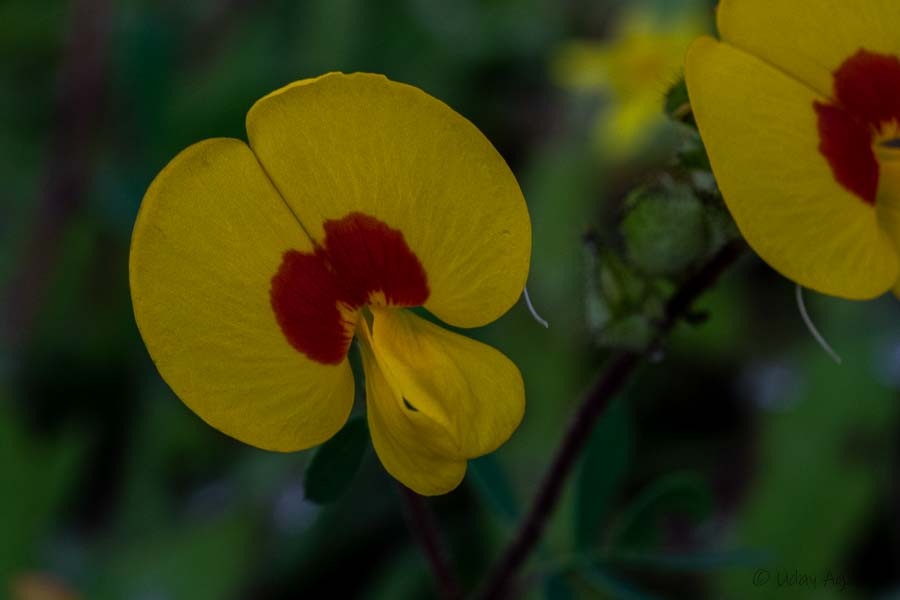
Smithia bigemina
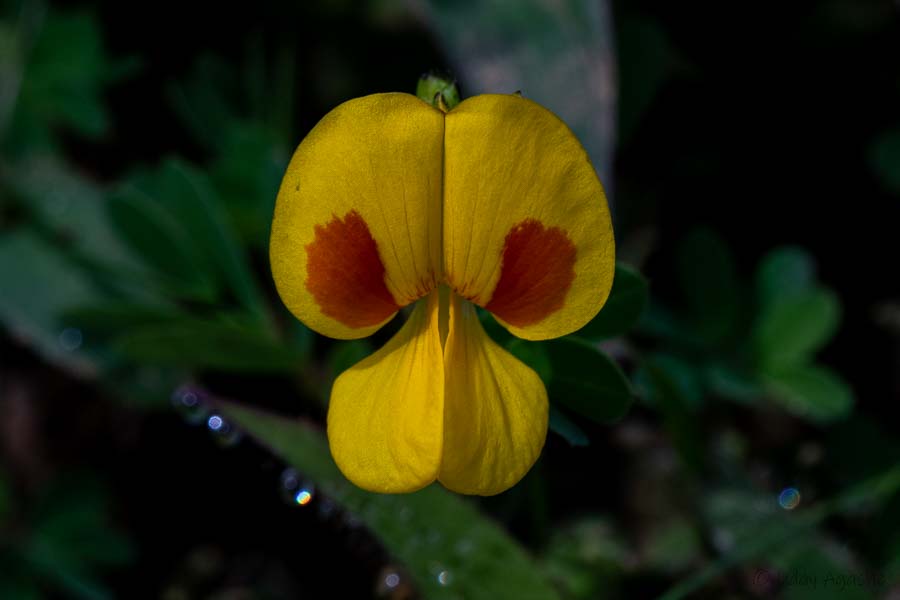
Smithia hirsuta
We had already spent about an hour with these flowers and very happy clicking it. But our experts were in search of something different. There eyes were constantly searching for the insectivorous. As per their experience, we should find 2 varieties of Drosera (insectivorous species) on this plateau. On little discussions/probing with them, I came to know that sometimes these are very difficult to locate. They are normally growing on slopes/edges of ravines (mostly not on plain land) and their size is very small.
With persistence, Clara found the Drosera Indica, but that was without flower. As soon as that one discovered, we started seeing more plants in the vicinity. And there were few with nice flower as well. While we were on it, Avinash had gone much ahead and found another Drosera indica that was nicely placed (naturally) from photography point of view. Close to that, we even saw the other insectivorous plant, the “Drosera burmanii”. Although we did not realize it then, the photograph on zooming revealed a fly trapped in it.
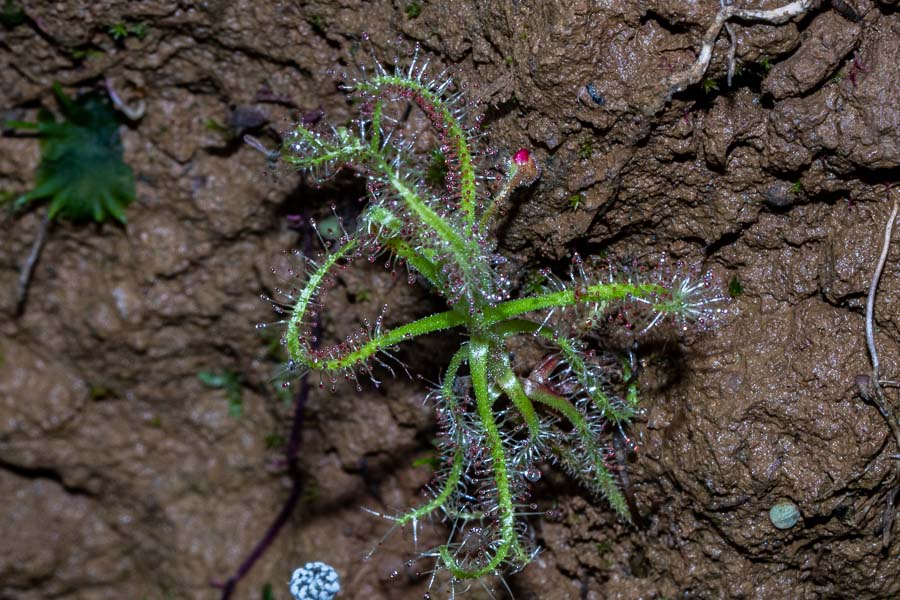
Drosera Indica
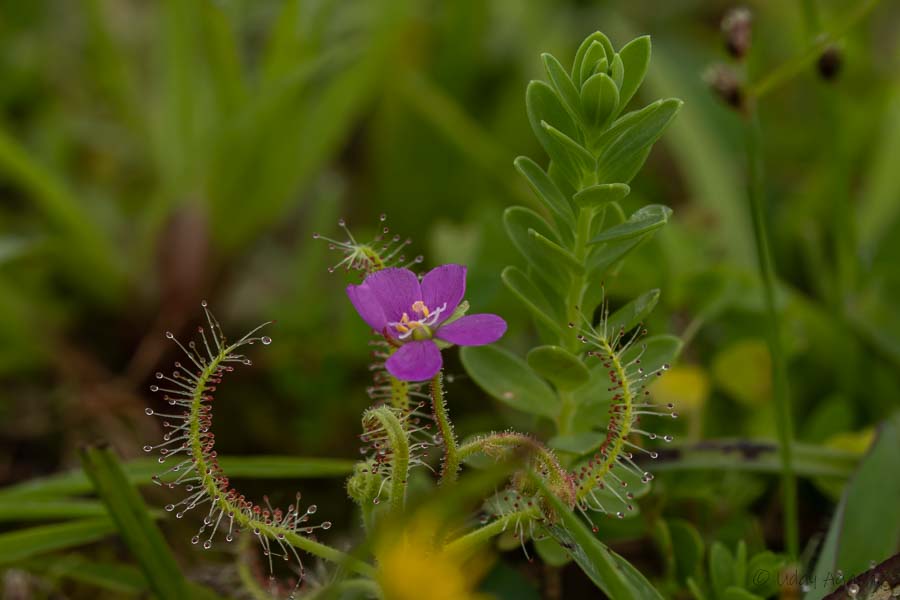
Drosera Indica

Drosera Indica
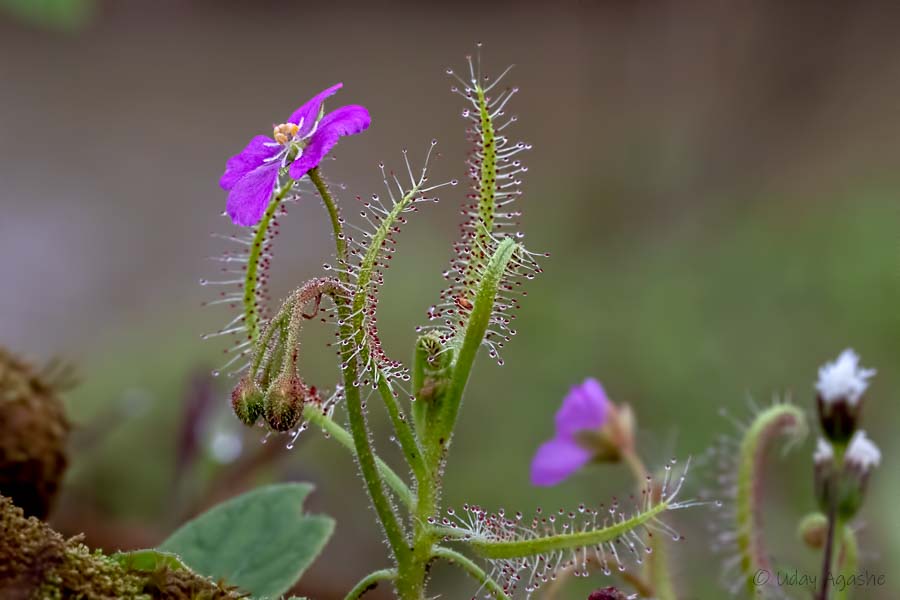
Drosera Indica
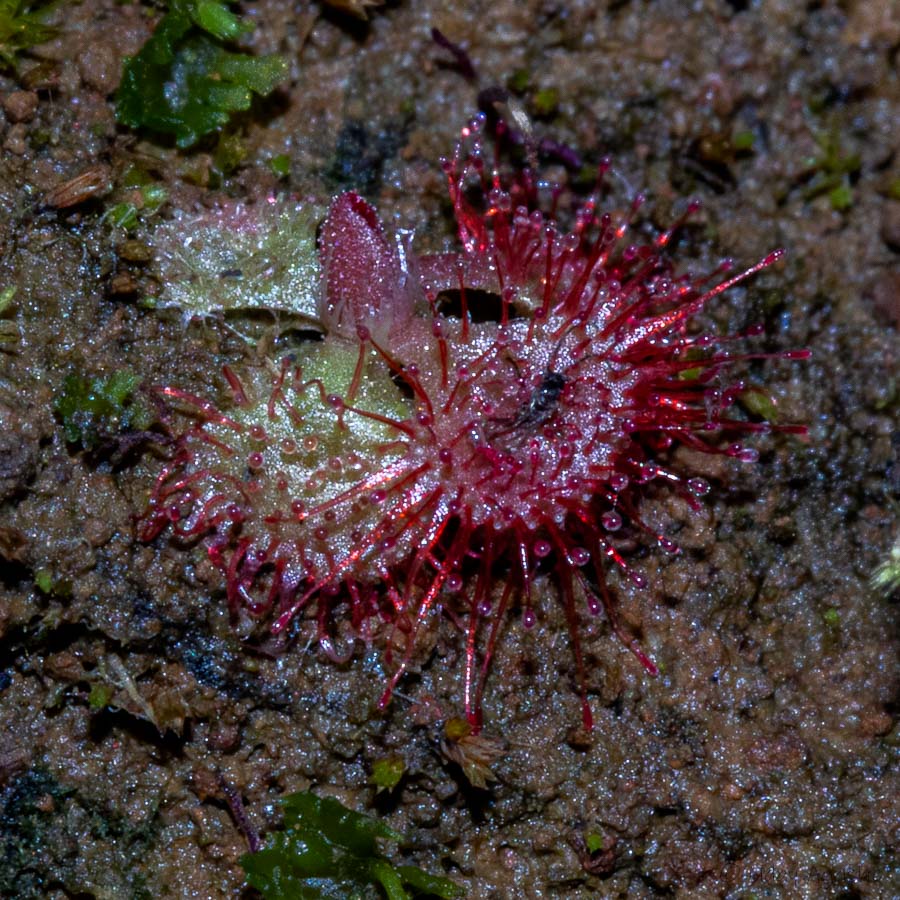
Drosera burmanii
Aren’t these plants beautiful? Possibly just 1-2 inch in length here (can grow up to 20 inches) but these can very easily catch a small insect and make a meal out of it. Those beautiful red dots can turn into a death-trap easily.
Kaas and the surrounding Plateaus do show you many such beauties hidden in those myriad colorful flower-scapes.
All this while, when we were busy clicking the flowers, we were also aware of the insects/toads, etc. that were hiding/camouflaging in the mud (and the leaves).

Cerulean Butterfly
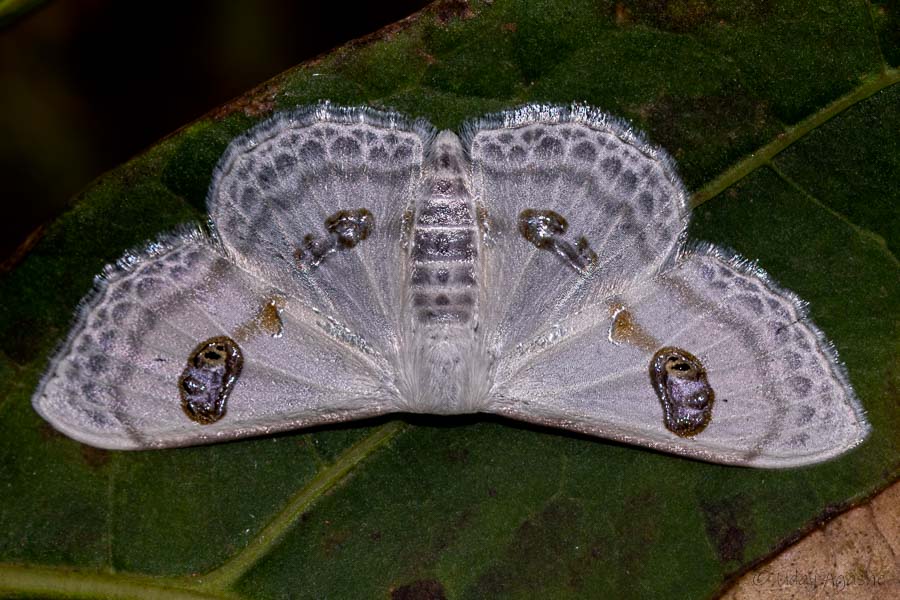
Moth

Juvenile Lizard
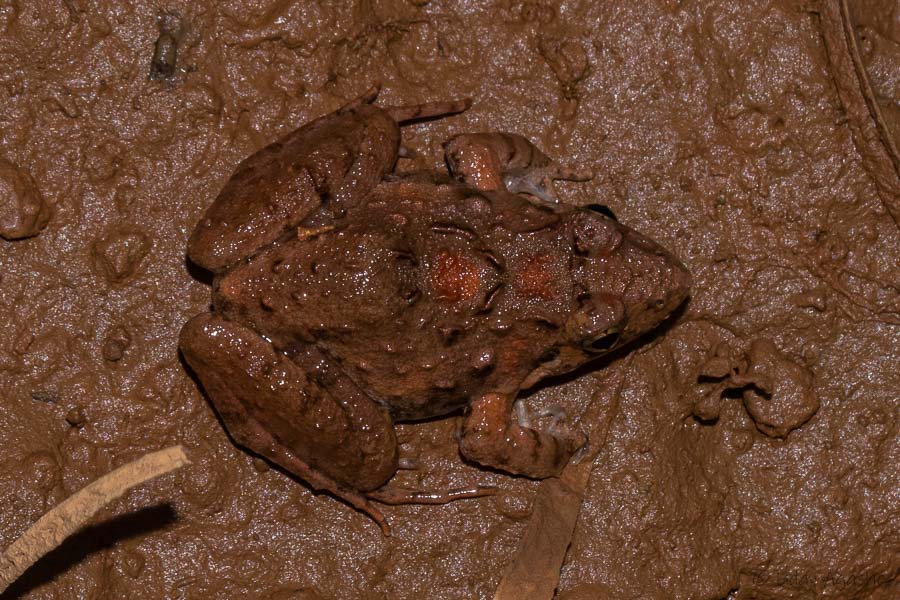
Leaping frog
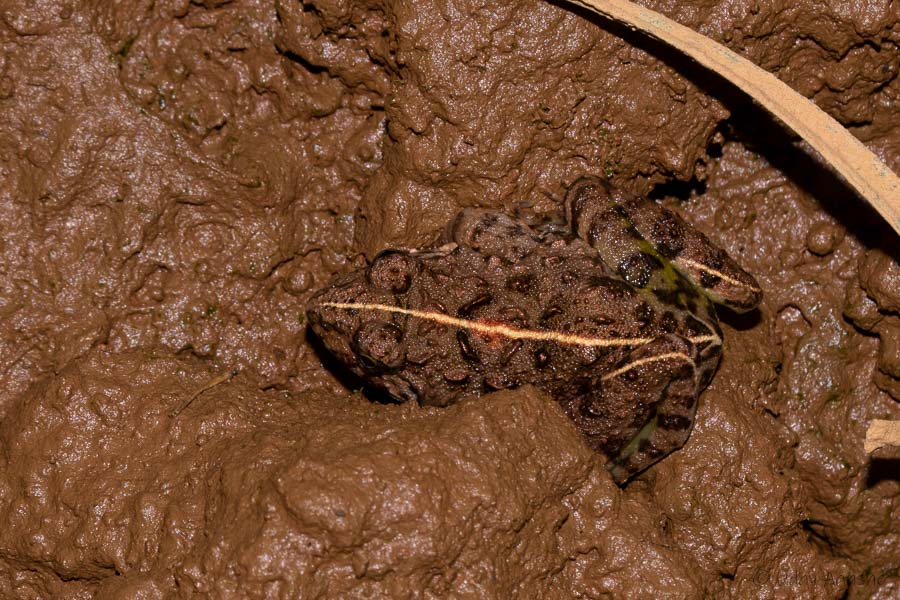
Frejerwarya frog
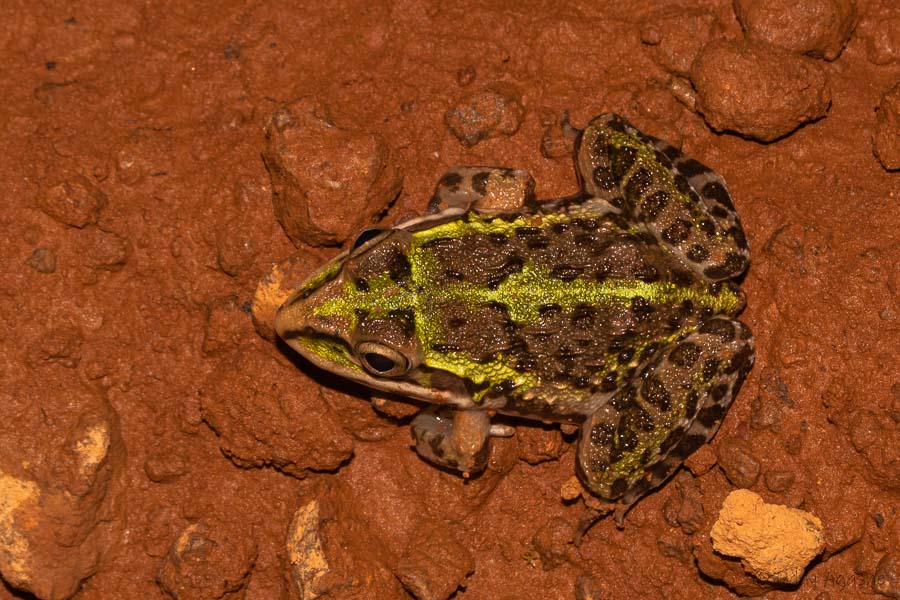
Bullfrog juvenile
Some more flowers…
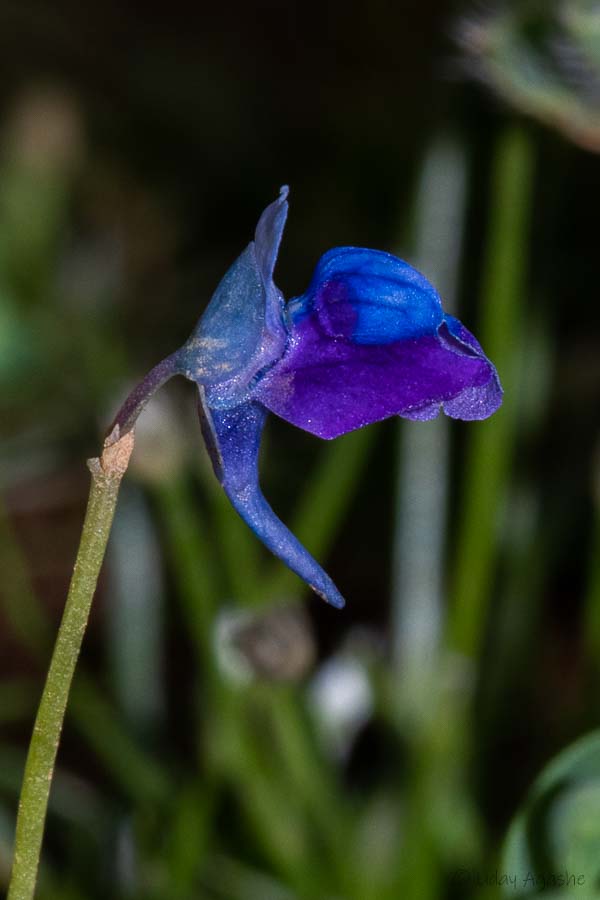
Utricularia graminifolia
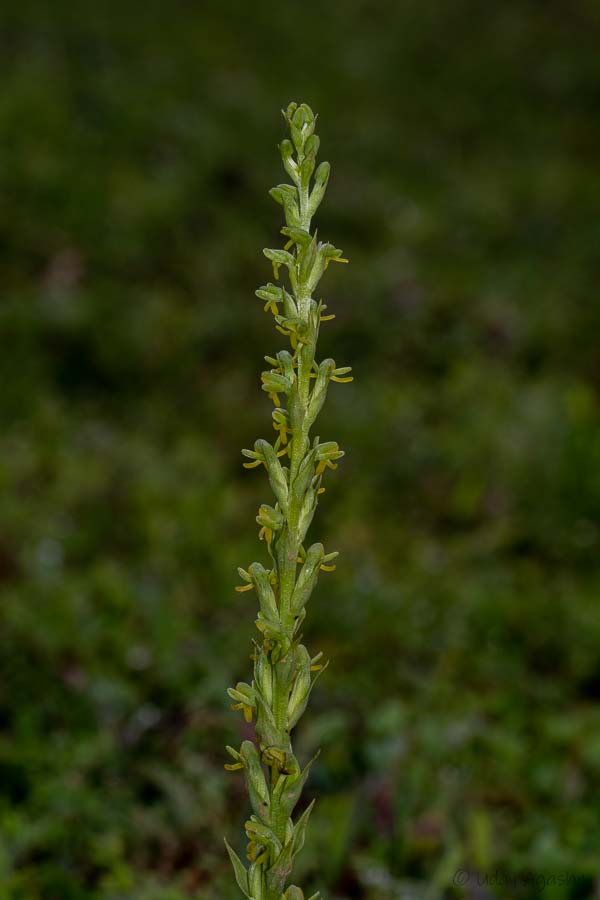
Peristylus densus (Ground Orchid)
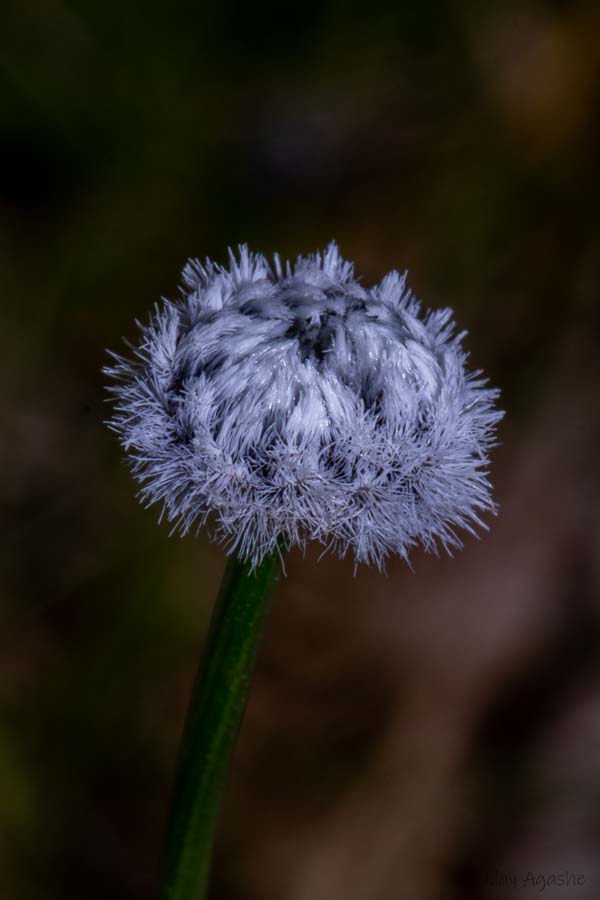
Eriocaulon sedgwikii
One interesting thing about the photos is, the ground that we were treading upon was wet (due to the rains) and most of the flowers were hardly an inch or two from the ground. Effectively I had to be on knees to take the photos. Initially I was a bit skeptical due to the mud but very soon even my elbows were muddy (thing to remember here is: I had to wash it myself after reaching home as the washing machine turned out to be useless!!).
Besides the DSLR even the mobile camera was put to good use, especially to capture the landscape views.

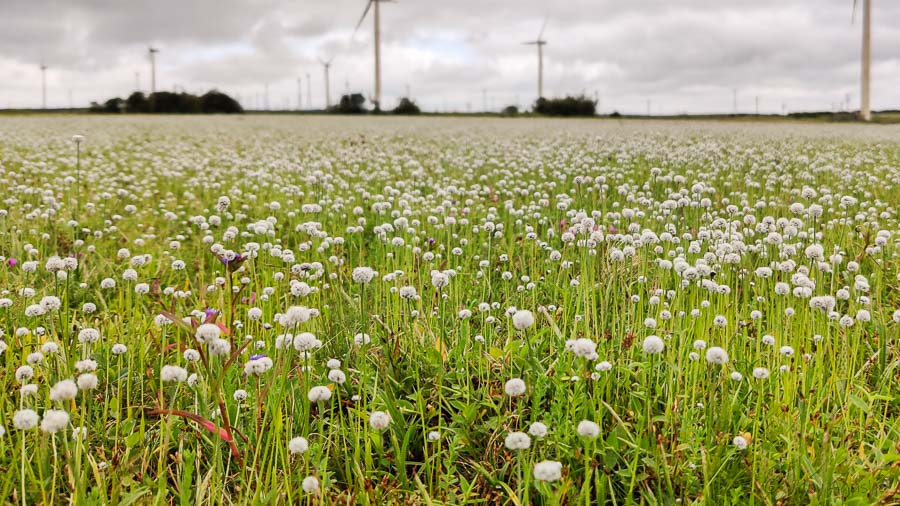
By now, our experts were satisfied with the progress as all the target species were covered. We had some time on hand, so we decided to walk towards the edge of the plateau. Here sometimes due to the gushing winds, the water-droplets from the waterfalls reverse direction and we wanted to experience it (but unfortunately there was no water flow near-by).
As we were walking towards the edge, we were zapped to see a fox walking (and then running) at the far end. Unfortunately, I was having only the macro lens but that didn’t stop me from taking a few shots anyway. At some distance in the valley we even noticed a Bonelli’s eagle circling around (with Avinash around, identification of that is never an issue).
We reached the edge, enjoyed the valley view and also partook some light snacks there. Not to forget, some group-photos and selfies too!
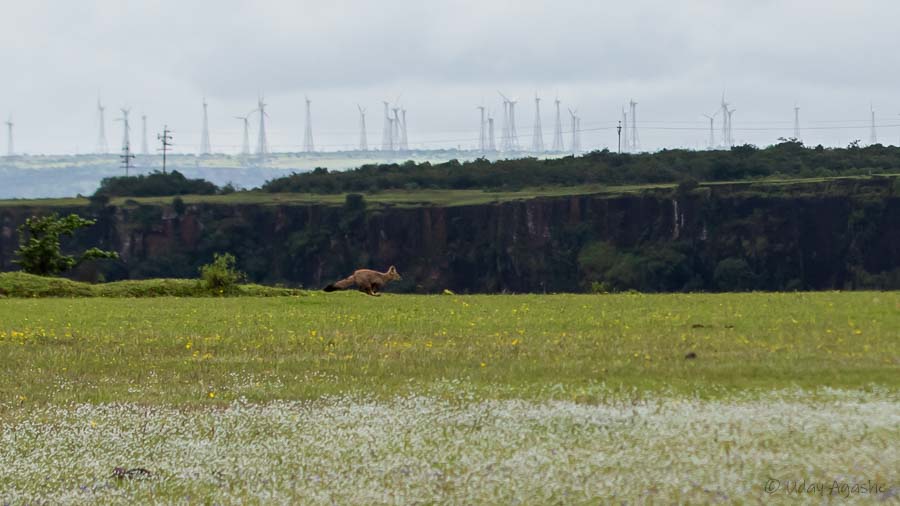
Indian Fox

Avinash checking the depth

Valley View
On the way to our vehicle, we had further flower varieties on display.

Pogostemon deccanensis (जांभळी मंजिरी)

Smithia bigemina
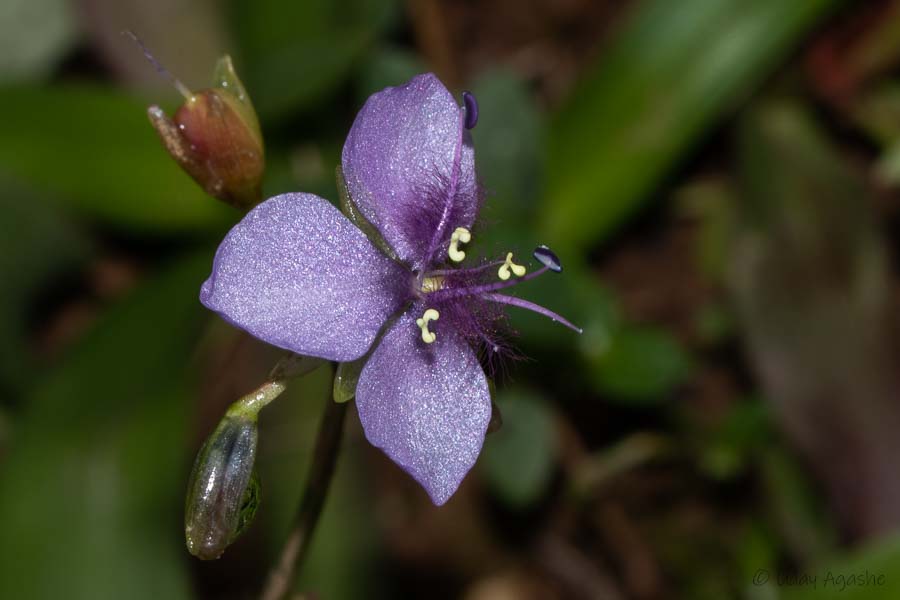
Murdannia simplex

Impatiens app

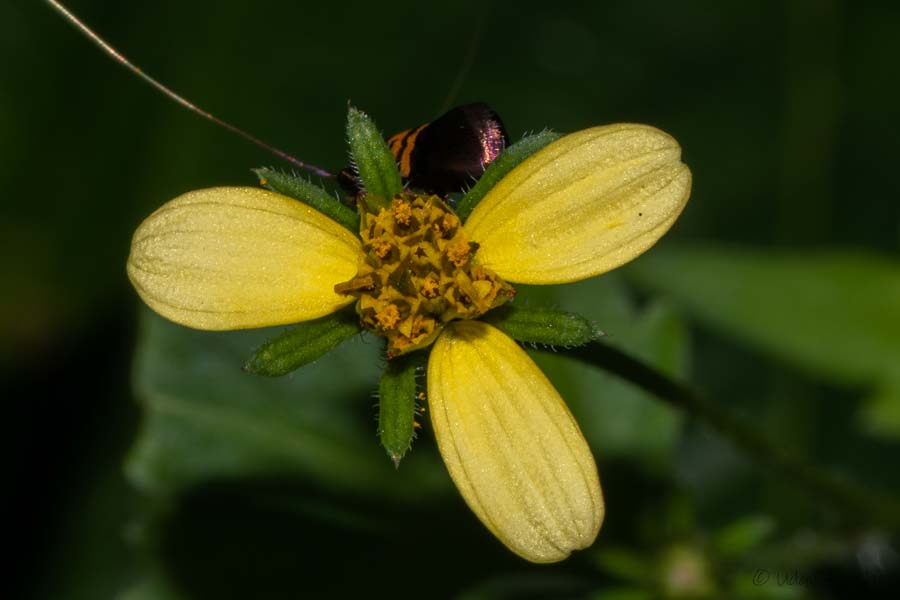
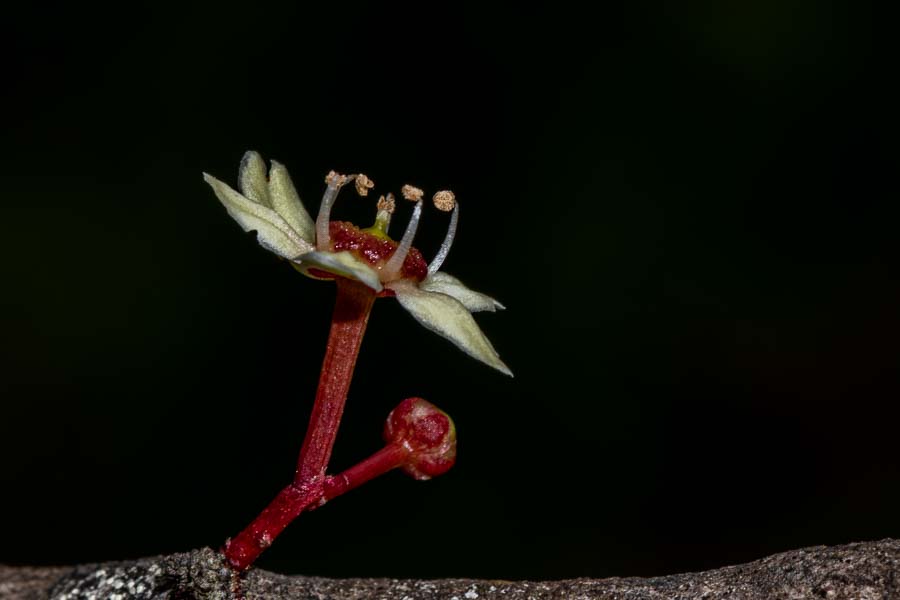

Mini watermelon
Here we got another taste of nature’s wonders!! As if the colors and variety was not enough, Clara decided to show us another marvel. This flower looks a simple pink one, with 1 petal curved upwards (other 3 on the same plane). At first, we could not make out anything special. Then Clara took a tiny stick in her hand and gently pressed it on the flower.. the moment a requisite pressure was applied, the magic happened. A small tube-like organ suddenly protruded out of the 4th petal and touched the stick. As the pressure was released, it went back smoothly. The mechanism worked so well; we had no words to express our surprise.
The purpose of that arrangement is pollination. When the insect perches on the flower (for honey), its weight creates the required pressure; the tube coming out is full with pollens, before the insect can understand it, the pollens are attached onto its body. The scientific name for this is “Vigna vexillata”. Locally this flower is also called “हत्तीची सोंड (Elephant Trunc)“.
That was a fitting end to our first session! Now instead of going back to hotel (and relax a bit), we decided to head to our next plateau (and have lunch somewhere on the way). But while descending down, we came across some more flowers. One of them is called “Dahi-bhat (दही-भात)” locally. The story behind this is,
“in a typical Maharashtrian meal, whatever may be the main course it has to end in curd-rice (दही-भात). Similarly, you may have seen the most colorful flowers on the plateau but on the way down, you have to see these flowers that are lined up on both sides of the road.”
Along with that, there were some other flowers seen near-by

Thunbergia fragrans (दही-भात)
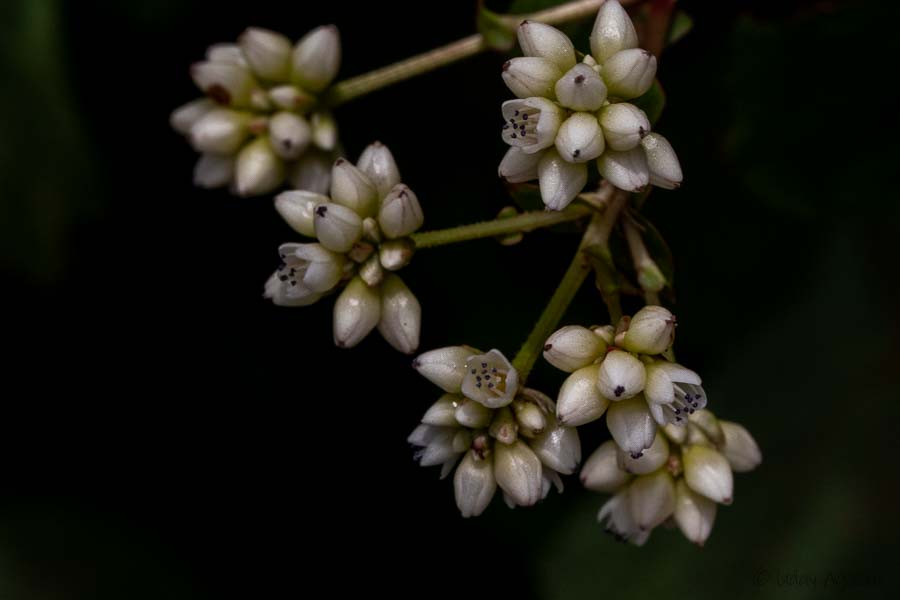
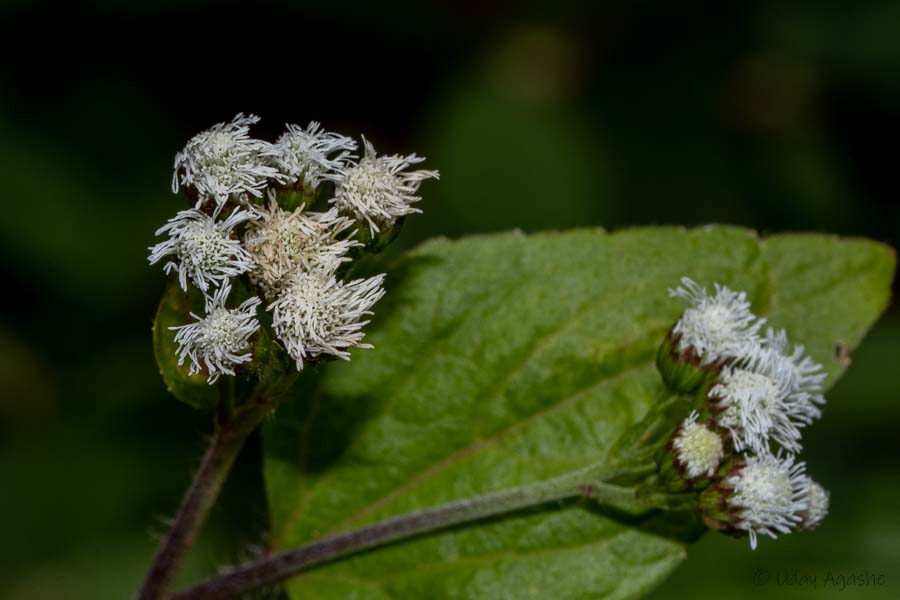

Paracaryopsis lambertiana
We had a relaxed lunch at a local inn on the way and from there moved to our next destination (Rahimatpur plateau). Here our targets were to find 2 Ceropegia varieties. This is another wonder of nature. Like any living organism, even the plants need to reproduce. The animals/birds can easily achieve it as they can move along but for trees, they can’t even move their leaves without the support of wind (there are exceptions like the mechanism we saw in the video above). So the Plants do it with the help of insects. And these Ceropegia have their own peculiar method. You will have to look at the flowers (or photos) to understand it better. At the base, the flower has a ball like structure that contains the nectar, central portion has petals fused together from outside but is like a tube, the petals at the top are once again joint together but have a passage in-between. This passage allows pollinating insects to enter-in. The entire inner portion is hairy and the hairs allow just a one-way movement to the insects (it can go in but cannot come out). As the insect reaches the nectar area, the pollens are spread all across its body. The flower keeps the insect jailed till this pollination is accomplished (sometimes even for the entire day). After that the flower withers¬ out, the petals droop down and the hairs inside become limp allowing the insect to come out. It is interesting to note that these are not insectivorous plants but they just catch the insects for pollination purpose. It is called कंदीलपुष्प in Marathi due to its typical shape.
As we were driving up towards the destination, Avinash asked the driver to stop at one point. We all got down and he lead us on a steep upslope (little difficult to hike with camera gear). Apparently, this was the location for one of the ceropegia species (Ceropegia hirsuta). On the hill, we were accompanied by local buffaloes (they seemed to dislike the intruders in their area) but luckily the herdsmen were also there to control. This time one of the participants found the flower even before Avinash/Clara could see it. And as usual, once we found one, there were many to be seen in the vicinity.
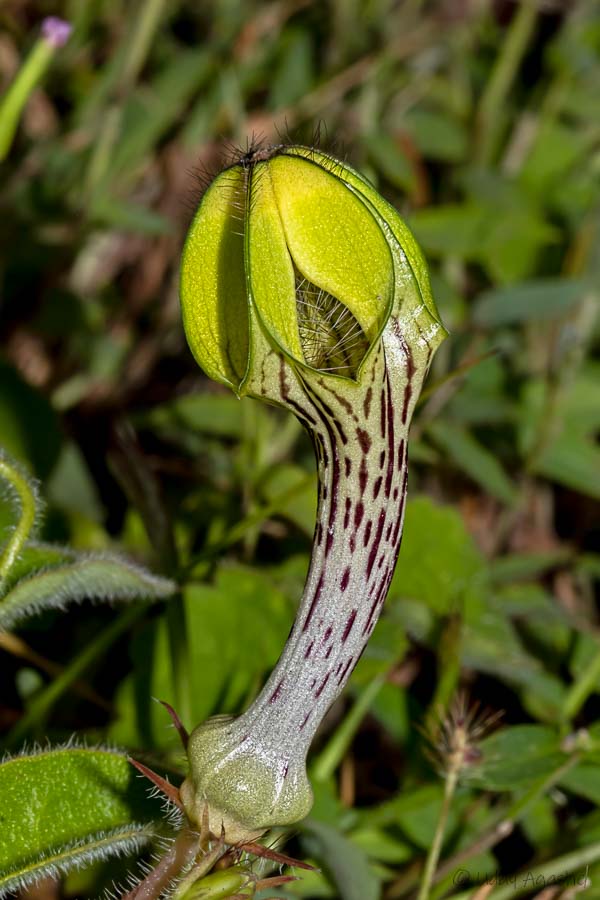
Ceropegia hirsuta

Top view
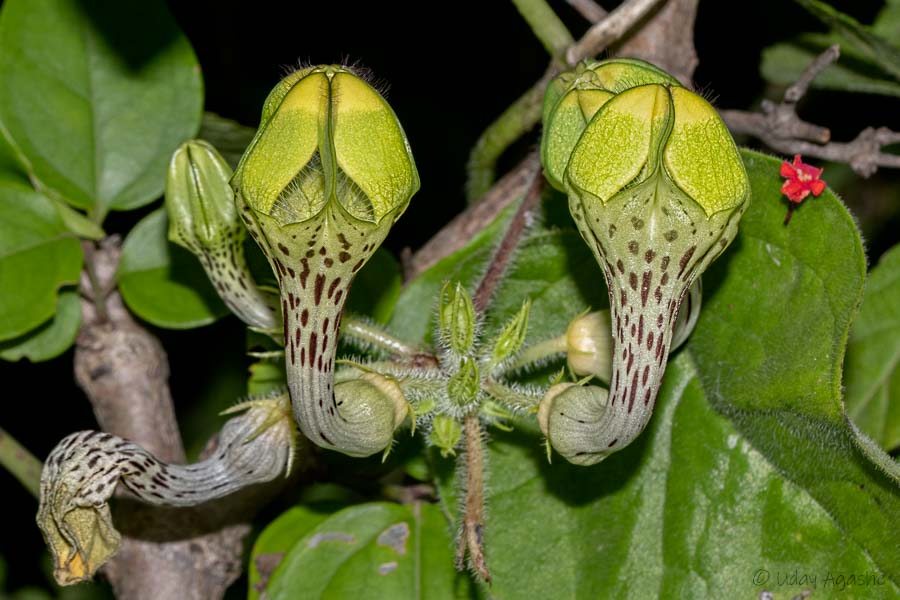
Showing multiple lifestages
We all got good look/photos at these flowers and then Avinash moved on to the other target (Ceropegia bulbosa). This was very difficult to find. It is much smaller in size and their number is very small. Avinash called us out from up the hill and indicated that he has found one. We quickly went there behind him. It was just amazing how he could even find it at that place. Well within the bushes full of thorns and absolutely hidden from plain sight. We all struggled to get a clear picture of this due to the thorns around.

Ceropegia bulbosa with insect

Ceropegia bulbosa with insect
After this there was just one more target species that was called Nilambari (Delphinium malabaricum). Unfortunately, these flowers were at little depth in the valley edge so we could not manage to go very close to it. There were a few other flowers that we could see that evening before calling it a day.
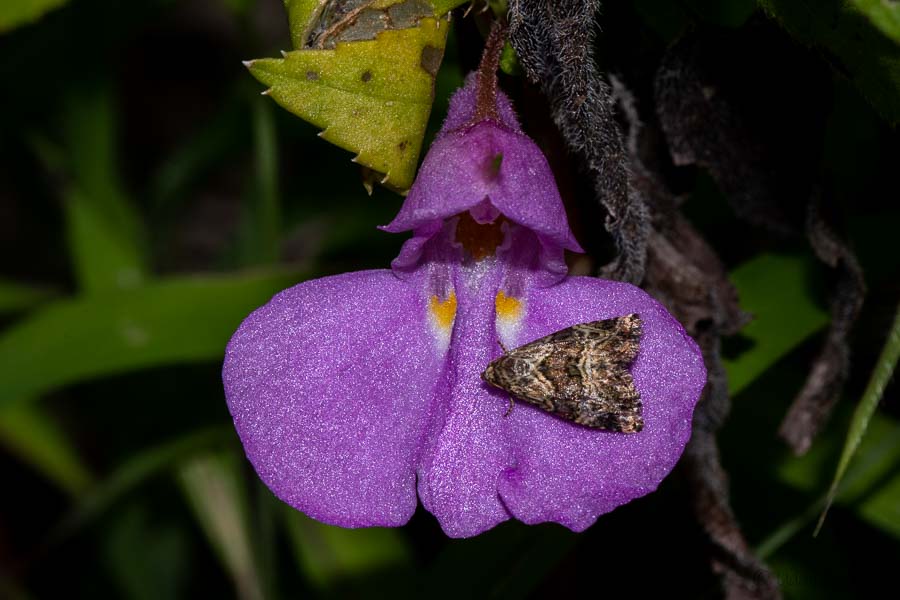
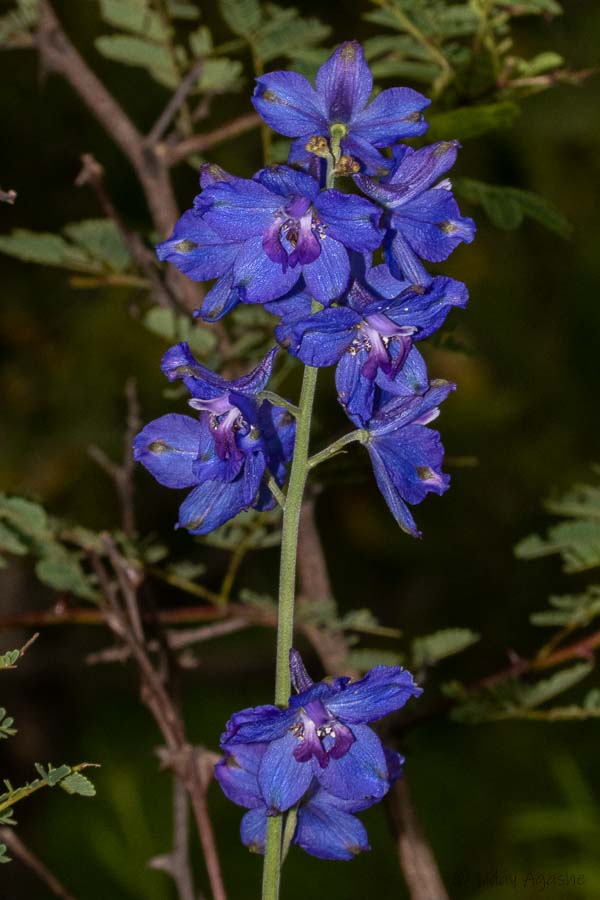
Delphinium malabaricum (नीलांबरी)

Lavendula bipinnata
On the way back, we saw another beautiful flower variety (Gloriosa superba) and had to get down from vehicle to take more photos.

Differemt life-stages
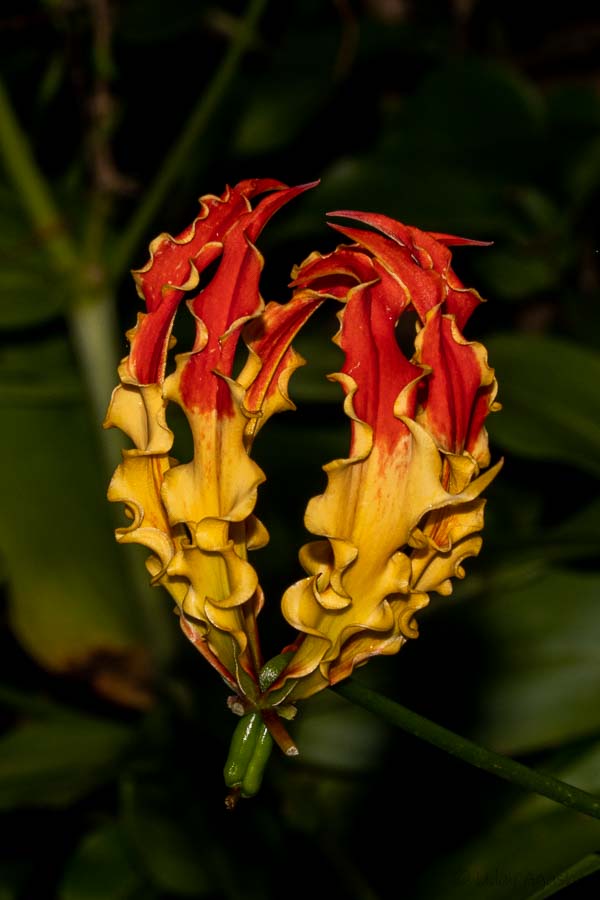
Gloriosa superba
It was about 8:30 by the time we reached the hotel, everyone was tired with the full-day activity so we decided to have a dinner first and then take some rest. In the typical JungleHike tradition, we should then be seating together to discuss the days findings. But considering that we had to get up early (check-out was planned by 5am), we decided to end the day after dinner.
Day 2 (29-Sep-19)
We had booked the 7am to 11am timeslot at Kaas and that meant we had to start from our hotel by 5am as we were about 70kms away. All were ready by that time in the morning and we quickly started the journey. Luckily we got one roadside restaurant that was open by 7am, so we could have a pohe/tea breakfast and reached the Kaas plateau by 7:30.Kaas is managed by the forest department and they have allowed only restricted number of people every day. They have kept a parking area at the base and ply their own vehicles to take tourists to the actual entry gates (apparently the gates used to get too crowded earlier because of the haphazard traffic, hence these changes). The actual plateau area is fenced so the entry is restricted.
The route to the plateau was just amazing. When we started climbing up, there was lot of fog around. But as we reached near the top, it was clear. When we looked out, we could only see the fog settled below us.

Foggy Landscape

Foggy Landscape
Our plan was to first go for the lake area (for a specific Ceropegia veriety) and then go to the common plateau area. This worked well as we could see a few flower varieties (besides the target) near the lake that we would have missed otherwise.
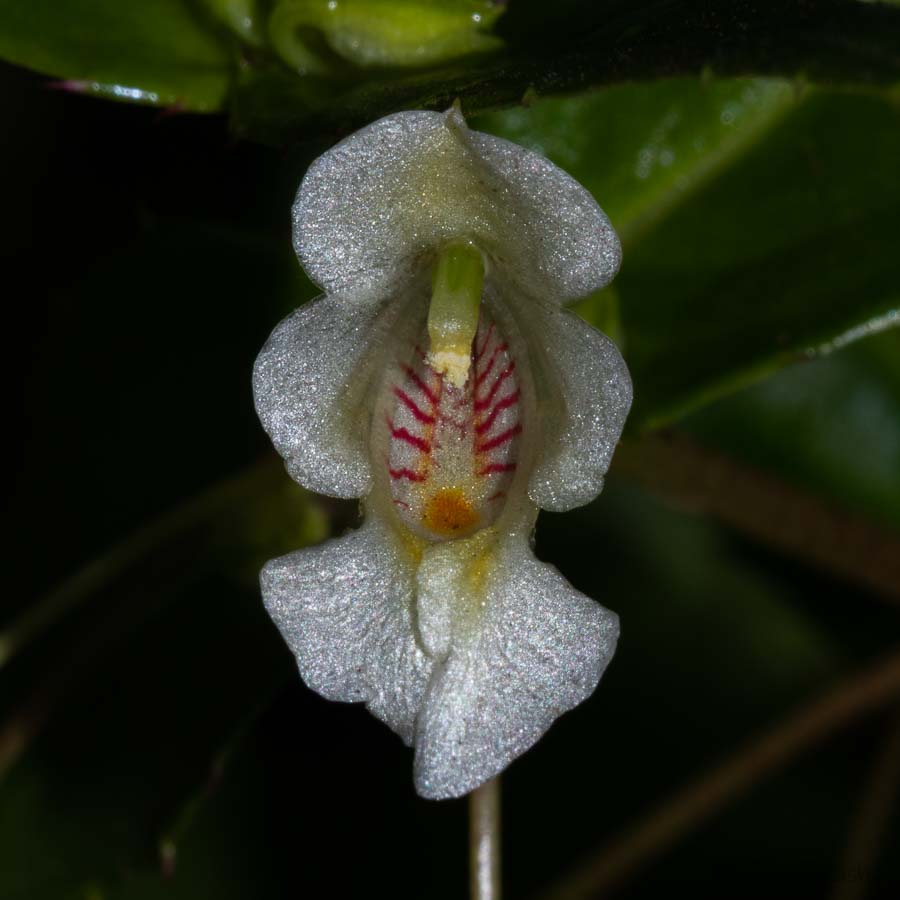
Impatiens dalzellii (तेरडा)
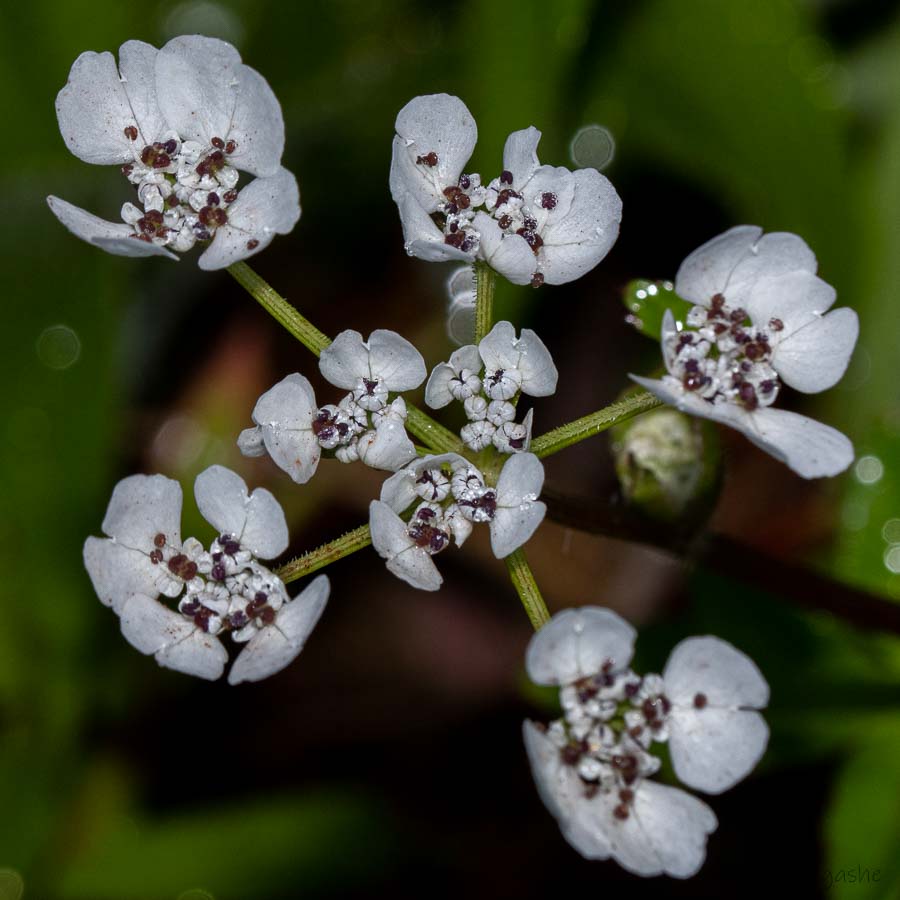
Pinda concanensis
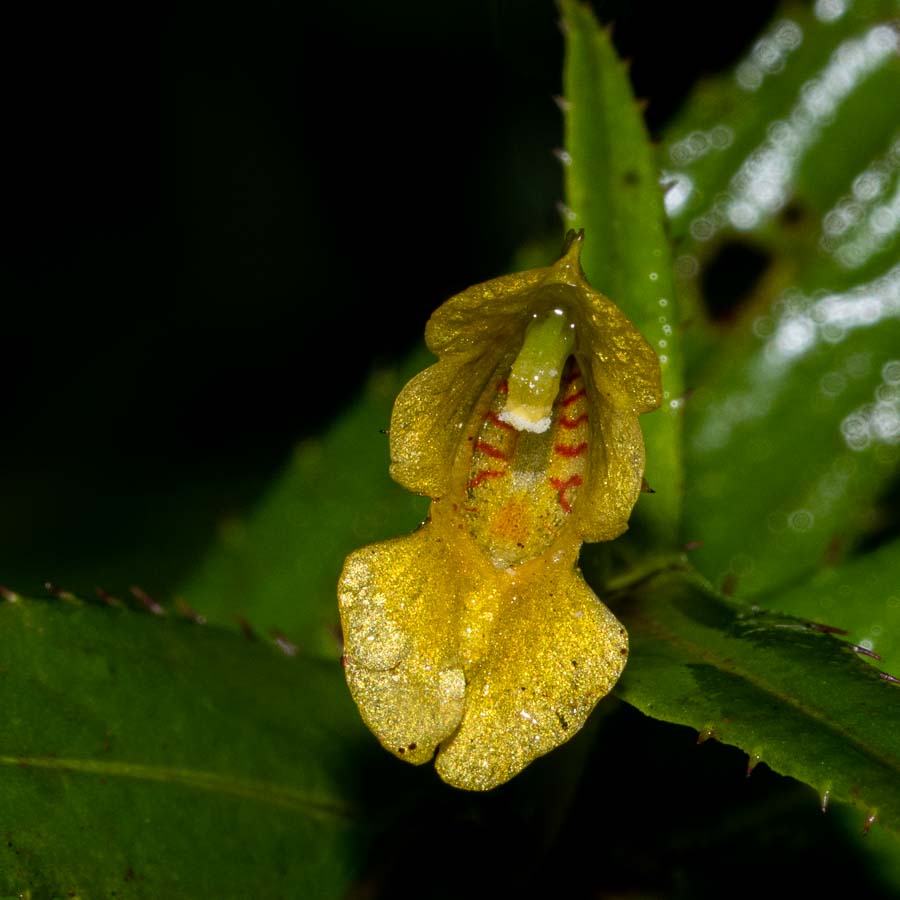
Impatiens dalzellii (तेरडा)
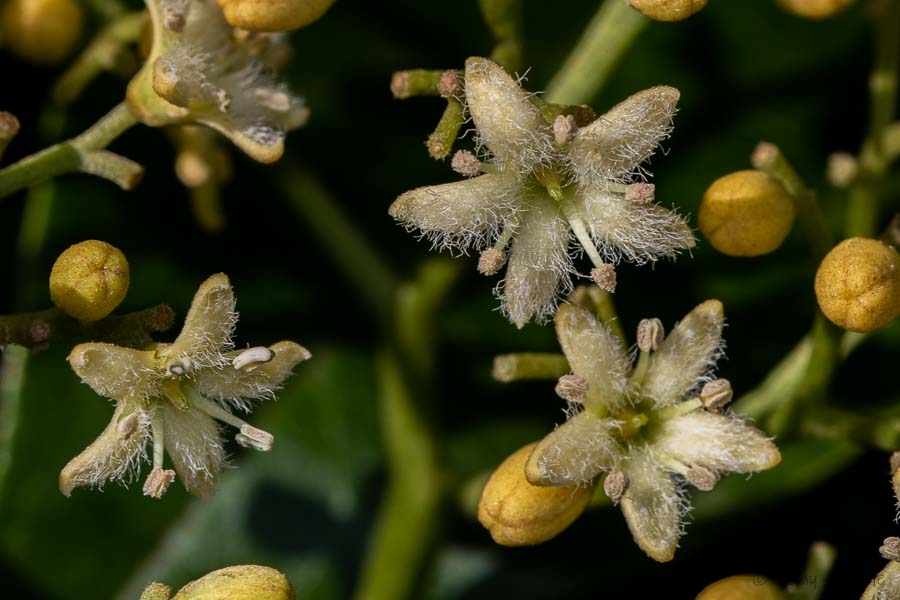
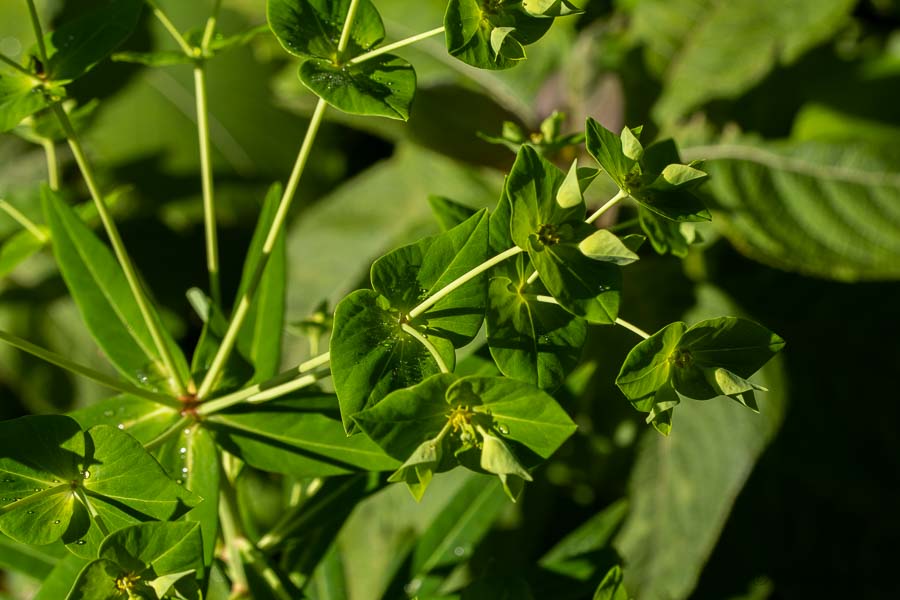
Euphorbia laeta/ Sqaure-root Plant

Dioscorea bulbifera
As we reached near the lake, Clara suddenly looked thrilled. She had found our target, the “Ceropegia vincifolia”. Once again, after finding the first one we quickly found 4-5 more in the vicinity. And on the way back, Clara found another special, one of the tree orchids that was hidden well inside the surroundings. Apparently, she had seen it in large numbers last year but this year we could only see this one.
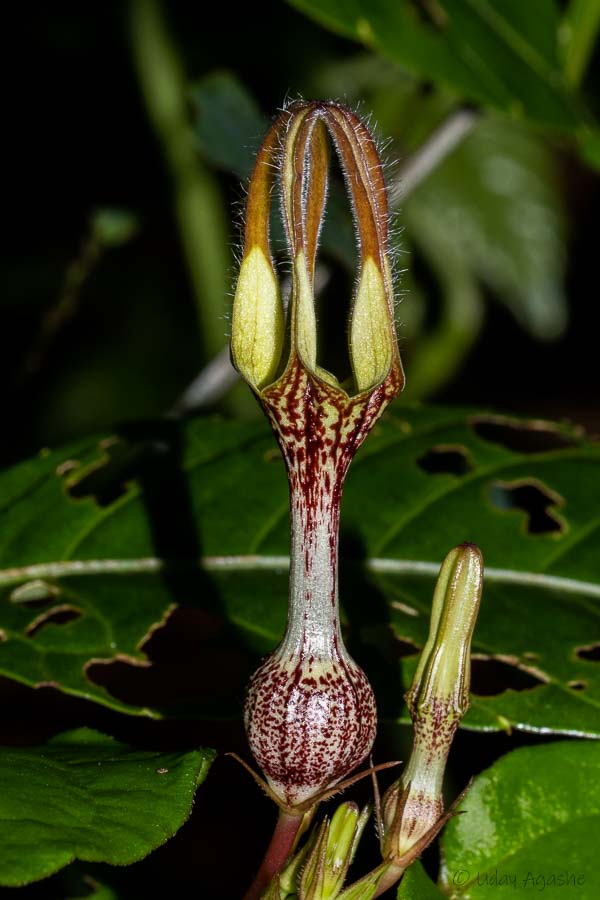
Ceropegia vincifolia
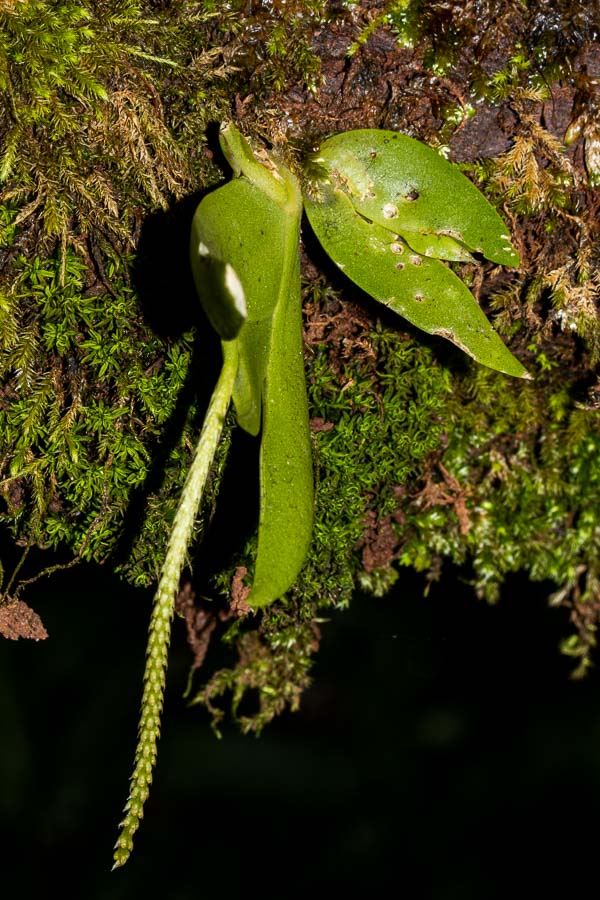
Orchid
With the first target achieved, our group moved to the main plateau. Avinash managed to get hold of his regular guide (they get assigned by rotation, and we had to wait till it was his turn). Although there were many flowers around, we kept our target species in mind and moved accordingly.
Pretty soon we got hold of another tiny “Ceropegia jainii” and one other nice flower.
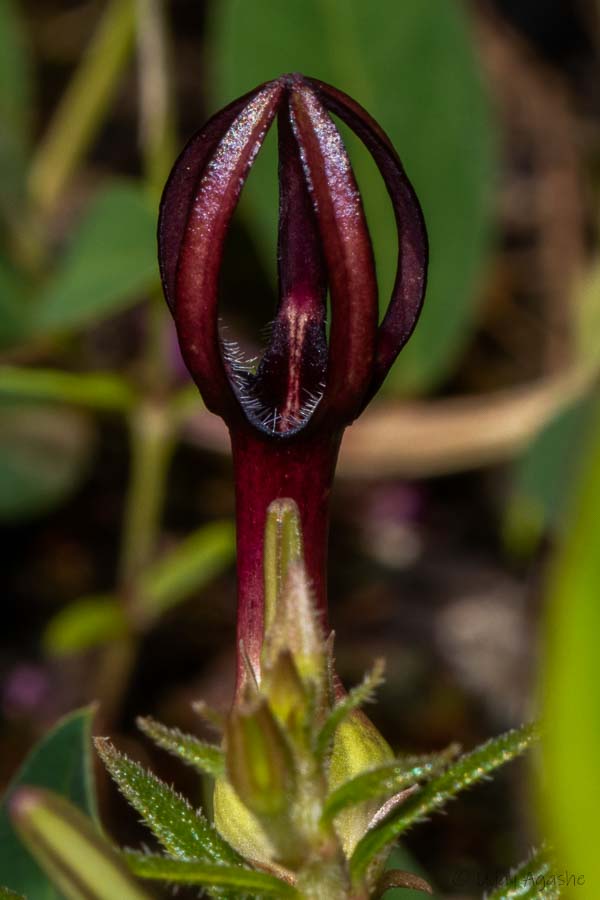
Ceropegia jainii
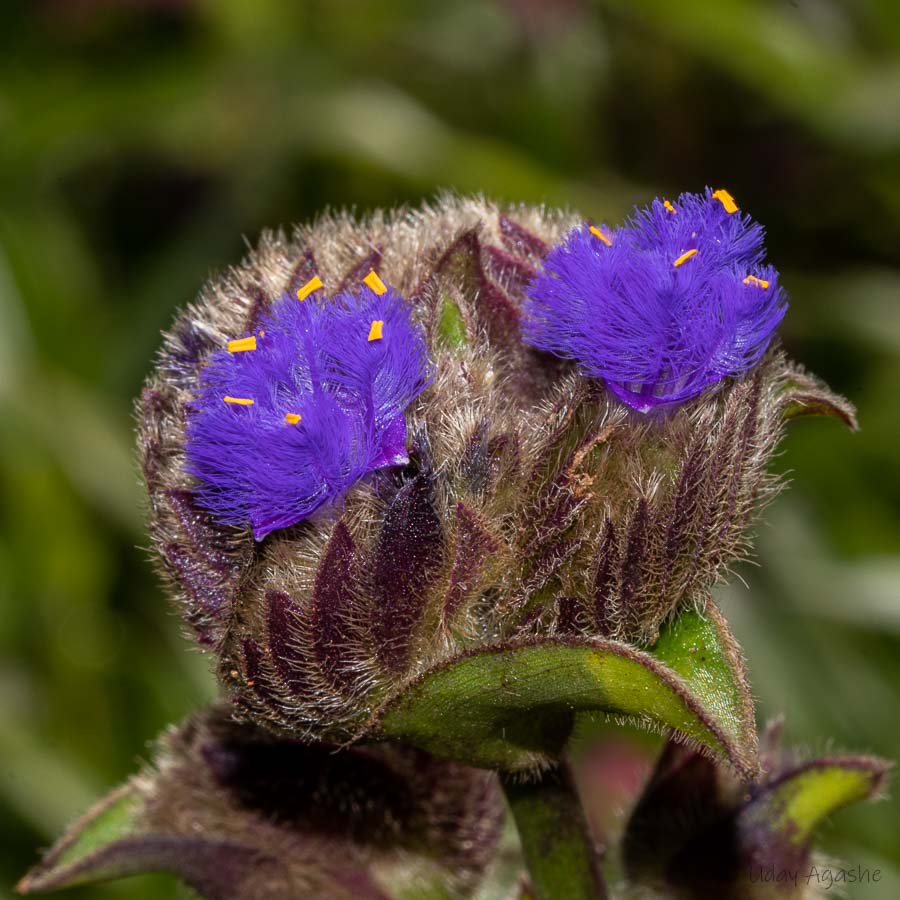
Cyanotis tuberosa

Flower carpets
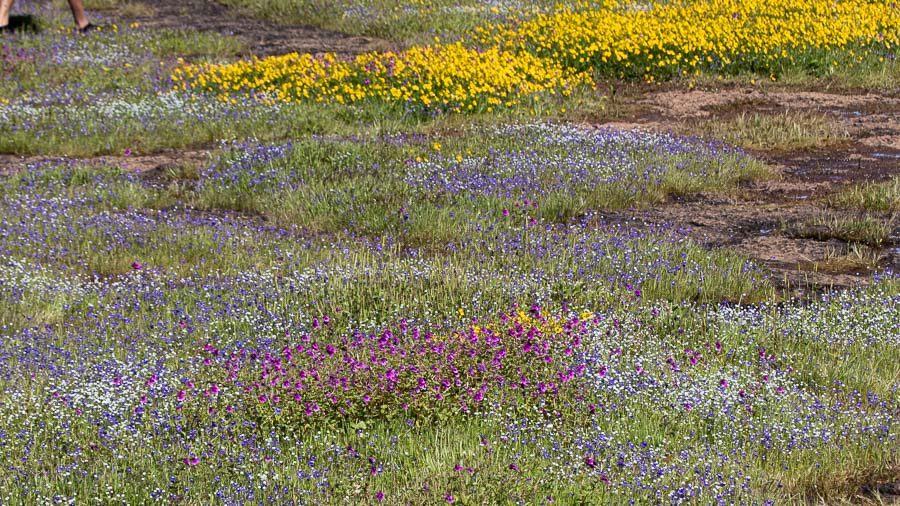
Flower carpets
Next on our list were the beautiful Vaytura (or Y tura) and the “Topli Karvy”. Karvy has its own speciality, the flowering for these happen only once in 3 years (in some varieties the period changes) and when it flowers (not this year), the entire plateau gets that color.
Vaytura gets its name from its’s typical shape, the flowering has a shape of English letter “Y”. The scientific name “aponogeton satarensis” is due to its presence in Satara.
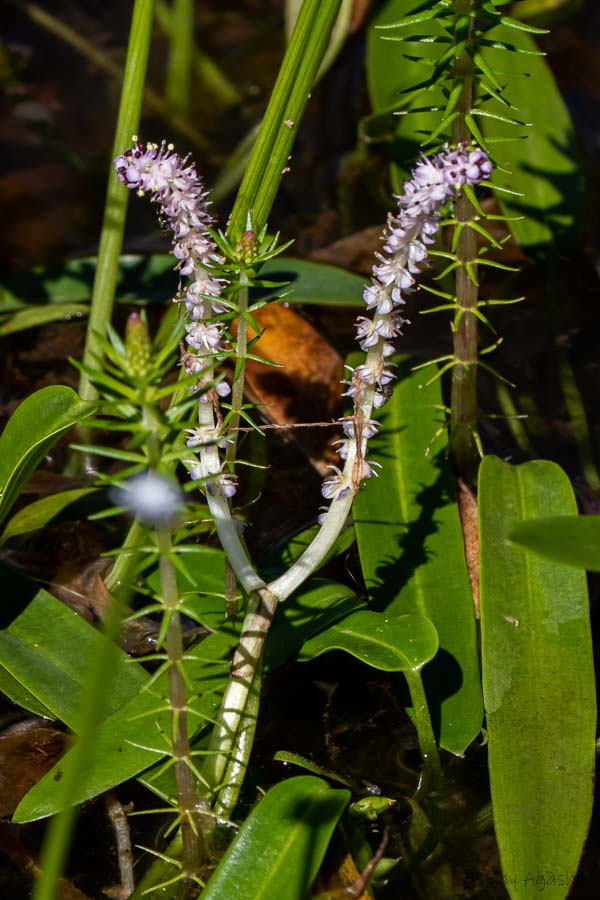
Aponogeton satarensis (वायतुरा)
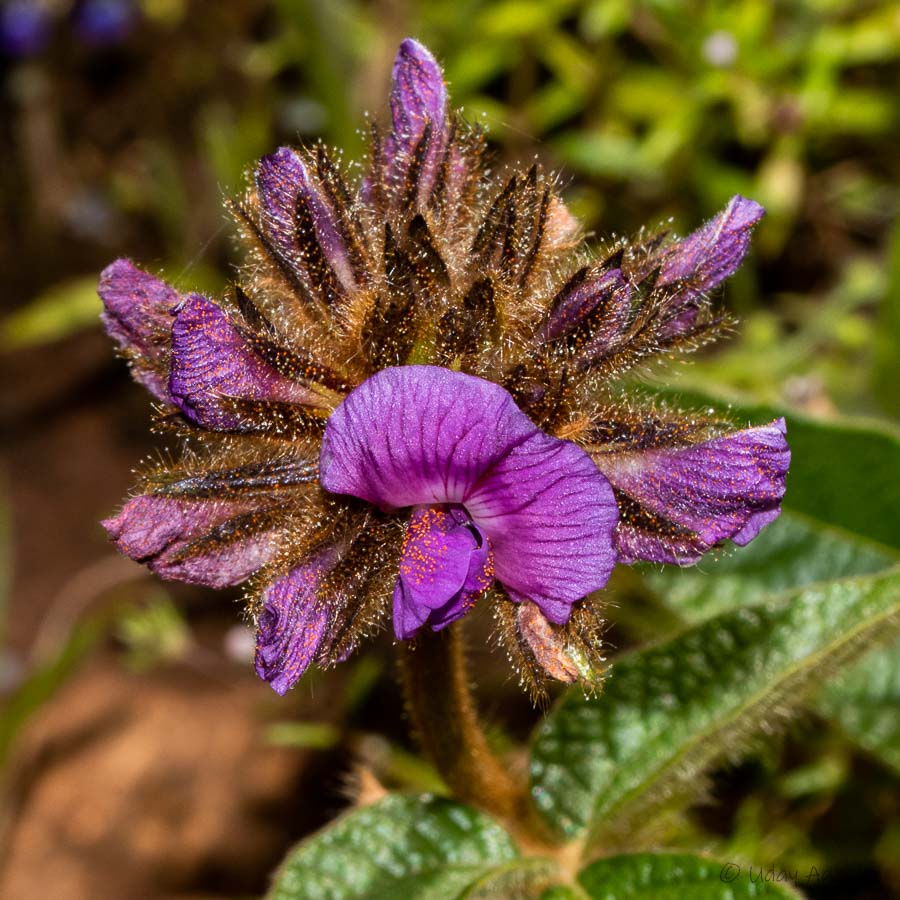
Flemingia gracilis (जरतारी)

Strobilanthes sessilis (टोपली कार्वी)

Murdannia crocea
This marked the end of our target list from the plateau but there was one more Ceropegia that Avinash was aware of and this apparently flowers on the roadside (not inside fenced area), so we decided to walk on the tar road for that. In that process we saw the beautiful “Malabar Lark” (was a lifer for me) on the fence.
Had to search extensively for it as it was little below the edge of the valley but we managed to see it. Could not venture near it for the photo though. Near-by, we got hold of another tree Orchid (Obenaria recurva) variety.

Ceropegia media

Obenaria recurva
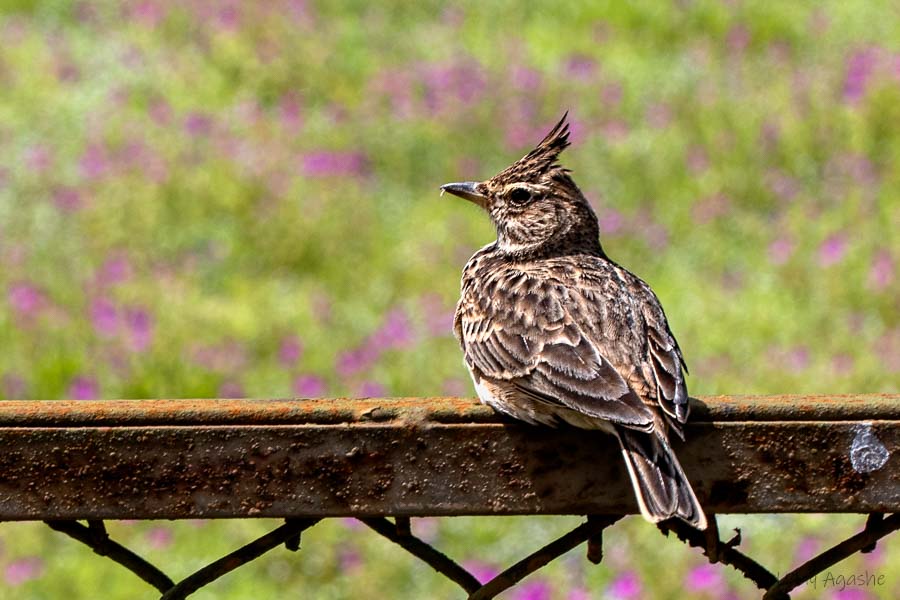
Malabar Lark
With that we finally ended our botany tour. But the group photo was pending still!! So we chose a nice landscape background on the way back and completed that task as well.
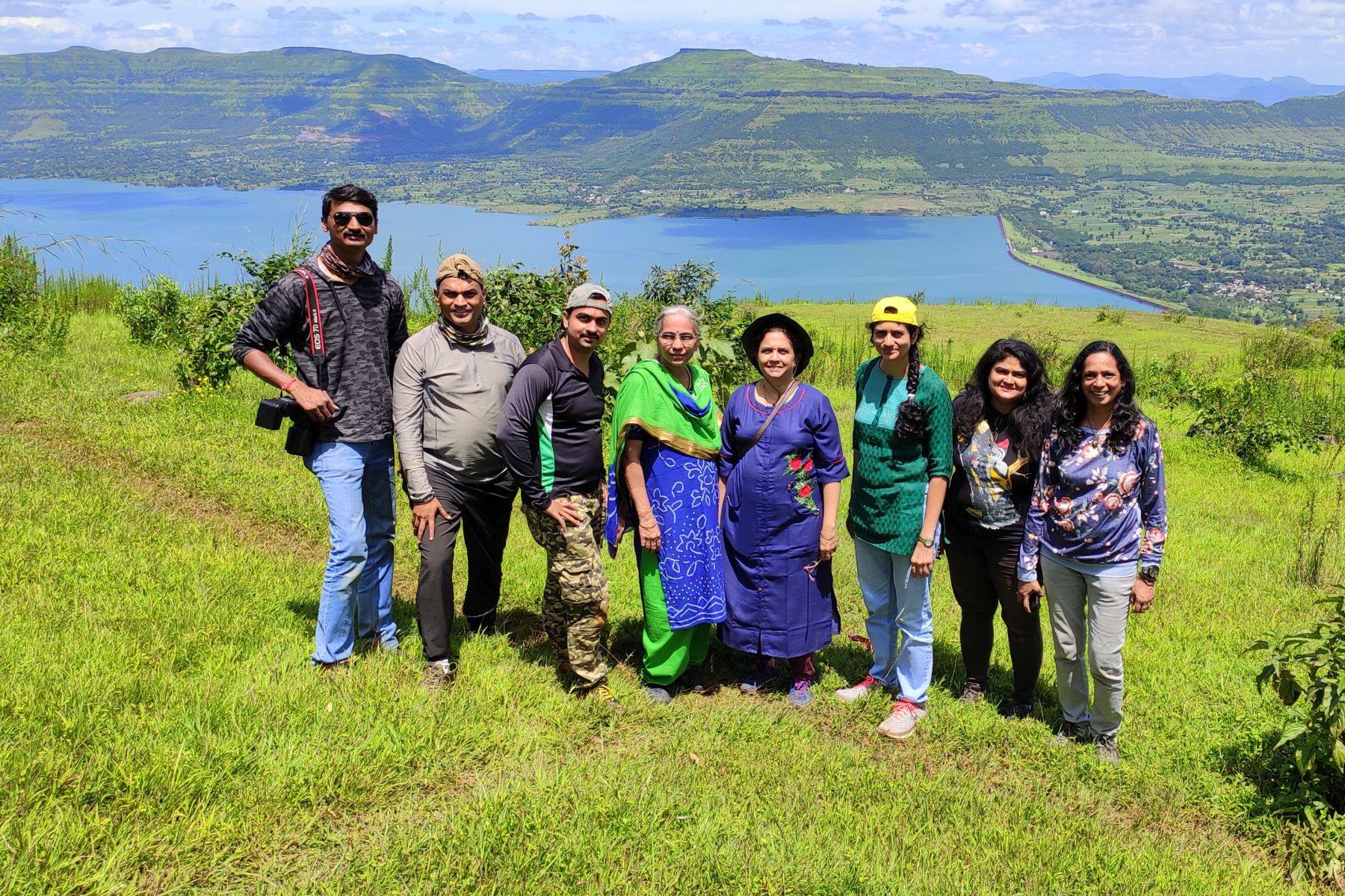
Final Note: there were just so many flower varieties, I could not include a lot of them here. It was definitely a learning experience for me and I would recommend going to Kaas at least once. But it is important to go with experts (and with people who are willing to explore), without that it may turn-out to be yet-another picnic spot. Any of you who can identify/correct the specific names, please do let me know so that I can update the blog.